Sage Experts: How Dr. Dufresne Became the Sultan of Salvia
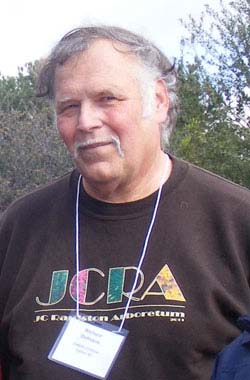
December 18, 2018 - With great sadness we have learned that our friend Rich as passed away at his home in Candor, NC.
It was love, great chemistry, and religion at first sight and scent. Dr. Richard F. Dufresne, an organic chemist, first discovered and began growing Salvias following a somewhat accidental discovery in 1974.
Dufresne was at loose ends having completed post-doctoral studies in chemistry at Johns Hopkins University in Baltimore and not knowing which way his career would turn. So he decided to help some friends working in the healing arts by researching herbs. This career detour led him back to his family's farm in western Massachusetts.
One of the first things Dufresne did was to visit Heinz Grotzke's Meadowbrook Herb Garden not too far away in Rhode Island. While there, he fell hard for the deep red flowers and fruity scent of Pineapple Sage (Salvia elegans). Flowers by the Sea Farm and Online Nursery grows a variety of dwarf types, including Elk Sonoran Red Pineapple Sage (Salvia elegans 'Elk Sonoran Red').
Finding a Life Path through the Flowers
Meadowbrook is a small organic farm based on Rudolf Steiner's principles of biodynamics, a green movement inspired in the 1920s by his teachings.
Due to his own bumpy childhood education, Dufresne was interested in alternative education for children. He liked the teachings of Steiner, a German humanist, educator and philosopher who founded Waldorf Education, an international system of alternative schools emphasizing ethics and hands-on experience.
Dufresne's day at Meadowbrook would change the direction of his life. Although his Johns Hopkins fellowship was the first of three post-doctoral positions he would complete, and despite his eventual career of nearly 16 years as a tobacco industry chemist, growing Salvias became his life path.
A passion for Salvias led Dufresne to develop his website and online nursery, A World of Salvias. He also spread word about the genus of some 1,000 true sages by traveling up and down the Eastern Seaboard for decades selling plants at festivals.
But you have to dig deep into the difficulties and fascinations of Dufresne's childhood to gain a sense of what led him to Meadowbrook and what caused him eventually to become known as the "Sultan of Salvia."
Baling Hay and Delivering Milk
Fred and Yvette Dufresne were dairy farmers and ice cream makers in the small Massachusetts town of Granby, which is part of the Springfield metropolitan area.
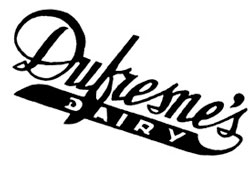
With the help of extended family and hired hands, they farmed vegetables, grew hay and other silage, tended their dairy herd and provided milk delivery to nearby towns while also running a restaurant serving homemade ice cream.
The restaurant was notable for two unusual structures that were built to attract auto traffic. One was shaped like a milk can -- it served as an ice cream stand -- and the other like a milk bottle. Both were about 25 feet tall.
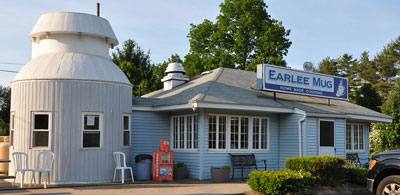
Their first-born son (call Dufresne "Rich," because he doesn't like "Rick" or other short forms of his name) was the eldest of five children. He cut the farmhouse lawn and baled hay to earn his allowance. In high school, Dufresne and his brother helped their dad run the milk route on Saturday mornings.
"We later realized that it was about the only way that he could spend time with us," Dufresne says.
Harnessing ADHD through Chemistry
Before his siblings were born, Dufresne was an only child for a number of years with no friends nearby. He remembers those years as an introspective and intense exploration of the natural world.
Dufresne says that he had an energetic mind and was surrounded by "wonderful distractions" including "colors, textures, odors, structures and critters."
However, early childhood was also a confusing time for the young explorer. He had no explanation for the swirl of thoughts and daydreams that caused him to be inattentive and receive criticism in school. Much later, Dufresne learned that he had a form of attention deficit hyperactivity disorder (ADHD), which is a genetic condition that makes ideas flow rapidly and jumble.
Of course, inattention is only one characteristic of ADHD, a condition that is often connected with brilliance and creativity. Adults who have ADHD may miss important details in conversation and make mental leaps that are difficult for others to follow, yet their brains burgeon with the kind of thinking that fuels innovation.
In his book The Edison Gene, Thom Hartmann points to Thomas Edison as an example of a creative adult who was criticized in elementary school for being "inattentive, fidgety and 'slow'." Fortunately, Hartmann says, by choosing to homeschool Edison for the remainder of his education, his mother made a decision that may have been responsible for lighting the world.
The world certainly brightened for Dufresne in the fourth grade when an astute teacher gave him an old high school chemistry text that "engaged" his mind. He says chemistry helped to organize his thinking and harness his efforts to be more organized.
"I was delighted when I found that chemistry helped make sense of the universe," Dufresne says. Other activities that helped him to find order were learning about astronomy and electronics, collecting minerals and building with erector sets.
Busy though they were, Fred and Yvette paid attention to their son's interests and gave him his first chemistry kit in fifth grade. By eighth grade, he had a complete Gilbert chemistry set.
Dufresne is one of many scientists who found their calling through childhood chemistry kits. Smithsonian offers a fascinating perspective on the rise, fall, and re-emergence of these kits and the positive way in which they can encourage careers in science.
Much of what Dufresne learned about chemistry during childhood was self-taught. "I built up a fairly respectable home lab during my high school years," he says. By the time he attended the University of Rochester, New York, for his undergraduate degree, he was years ahead of other chemistry students.
Seeking a Career with Heart
Dufresne earned his doctorate in organic chemistry at Pittsburgh's Carnegie Mellon University from 1965 to 1972. It was a period of national upheaval due to the Vietnam War and, as Smithsonian noted in its article, a time of negativity for the chemical industry due to production of toxic defoliants such as Agent Orange.
A devout Roman Catholic by upbringing, Dufresne came into conflict with his beliefs during his years in Pittsburgh. He struggled with finding ways not only to meld his analytical mind and religious viewpoint but also to identify ethical, creative work in chemistry.
Dufresne says he was dealing with his own "internal reformation and counter-reformation."
To answer the many questions that science couldn't answer, Dufresne began studying philosophy, comparative religion, the humanities and healing arts in his free time. This led him to the works of Steiner and to a group of humanist friends, including members of the Unitarian Universalist Association -- a church that embraces teachings from many religions and philosophers.
Regarding work, Dufresne notes that he "didn’t have the temperament, business skills, or world views necessary to be successful in business" or "the skill set and energy necessary to lead a productive academic career."
Doubting whether he could persist in his field of study, he began to think about the skills he had gained as a farmer's son.
Nat King Cole's song Nature Boy resonated for him. Instead of the natural world, it talks about the nature of love and opens by telling listeners about "…a boy, a very strange enchanted boy" who "…wandered very far, very far over land and sea."
While searching for another chemistry fellowship and continuing to sort his opportunities, Dufresne returned to his parents' farm in search of his early enchantment with nature. He began growing a variety of Salvias, including Pineapple Sage and
Fruit Scented Sage (Salvia dorisiana), and selling them on Saturdays at the nearby farmers' market in Amherst.
After obtaining a postdoctoral position at Brandeis University near Boston, he continued attending the Amherst market. He increased his Salvia collection by purchasing from, or swapping plants with, nurseries and botanic gardens.
Following Brandeis, Dufresne gained a fellowship at the University of Massachusetts, Amherst, and then a position as a research chemist at the Lorillard Tobacco Company in North Carolina where he worked for nearly 16 years.
Being a Plant Detective
While at Brandeis, Dufresne would occasionally visit the nearby Harvard Herbarium to view Salvia "type sheets" -- pieces of paper to which dried specimens are attached. He would take notes, photocopy the specimens and share this information with nurseries and collectors around the nation in an effort to encourage them to grow the plants or to help him find them.
Dufresne says that it was this "good will" effort that caused plant explorers -- ethnobotanist Manuel Flores and Texas nurserymen Carl Schoenfeld and John Fairey of Yucca Do Nursery -- to invite him on research trips to Mexico. The first one, with Flores, occurred in the late 1980s. The second, with the Yucca Do team and Flores, was in 1990.
Another excellent resource that Dufresne found at the Harvard Herbarium were illustrations in old publications, including the 19th century Paxton's Magazine of Botany and Register of Flowering Plants.
" I discovered there had been quite a few salvias in cultivation in the late 19th century and early 20th century that had since disappeared from the trade," Dufresne says.
It angered Dufresne when he found that pages had been stolen from the magazines. The culprits would have to have been other academics, he notes, and they likely framed and sold the prints.
This caused the frustrated researcher to invent a method for creating botanically correct color images of sages from live specimens by using a flatbed scanner and Photoshop. (See Digitally Recording Salvias sidebar.)
One purpose for the scanned images is to give festival customers a highly detailed, flowering image of the plants they purchase, which usually aren't yet in bloom. For example, Dufresne places small copies of the pictures and plant information on markers in plant pots. He posts larger views on exhibition boards.
In the past, Dufresne also published his images in his hardcopy Salvia Placard Handbook, a resource relied upon by organizations such as the New England Unit of the Herb Society of America. Nowadays, as retirement moves closer and as the publishing world becomes more digital, Dufresne's placard cards are only available online as PDF files.
Becoming the Somewhat Retiring Sultan of Salvias
Better known to many Salvia gardeners as the "Sultan of Salvias," Dufresne doesn't remember exactly who dubbed him the "Sultan of Salvias." It may have even been that he did it himself when joking with friends. After all, the license plate on his van boldly announces "SALVIA." He particularly has helped to popularize sages from Mexico, including ones -- such as Salvia karwinskii x involucrata v. puberula and Salvia involucrata var puberula 'Hidalgo' -- that he collected on his Mexico plant explorations. Here are some of his introductions available through Flowers by the Sea.
- Cherry Chief Autumn Sage (Salvia greggii 'Cherry Chief')
- Raspberry Royale Sage (Salvia greggii x lemmonii 'Raspberry Royale')
- Hidalgo Roseleaf Sage (Salvia involucrata var puberula 'Hidalgo')
- Jame Orange Mountain Sage (Salvia regla 'Jame')
A generous sage enthusiast, the Sultan shares his knowledge so freely that it springs up in gardens nationwide. As he says, "I am an open-source person, ready to share wondrous gems." His nickname has stuck and often shows up in online plant forums that Dufresne visits to spread word about Salvias and other drought-resistant members of the mint family (Lamiaceae).
Aside from constantly updating his Salvia Placard Handbook, Dufresne also has written numerous articles about Lamiaceae for horticultural publications such as one in the summer 1999 Rock Garden Quarterly concerning Agastaches.
After losing his job at Lorrillard, Dufresne remained in North Carolina. Nowadays, he no longer gardens, but maintains his Salvia collection in a greenhouse.
For field testing of plants, Dufresne relies on Tony Avent of the Plant Delights Nursery in Raleigh, North Carolina, and North Carolina State University's J.C. Raulston Arboretum. Both are close enough so he can visit to observe progress.
Dufresne still participates in some East Coast horticultural festivals and remains a go-to resource for information about Salvia gardening in the Southeast where unpredictable rains can swamp plant roots and threaten even water-loving species, including S. guaranitica forms.
For best success with sages and other mint family plants in the Southeast, Dufresne recommends raised beds that are at least 8 inches tall and filled with sandy loam rich in humus.
Feeling Thankful for Salvia Experts
We're thankful to Dr. Richard F. Dufresne for the friendly, generous way in which he has helped increase interest in the Salvia genus and has shared plants. We also appreciate the many hours he spent helping us gather information for this profile.
Sometimes the horticultural world is a small one. To swing back full circle to the beginning of this article, we need to mention that Heinz Grotzke of Meadow Brook Farm became one of the important influences in FBTS farming practices many years ago. For questions about Biodynamic agriculture or information about any offerings in the FBTS catalog, please call or email us. Similar to the Sultan, we enjoy sharing what we know.
Digitally Recording Salvias
In hopes of improving herbarium type sheets for plant researchers, the late Dr. Richard F. Dufresne experimented with ways to create digital samples of live plants in bloom.
Before the advent of digital cameras, Dufresne used flatbed scanners to create highly detailed images of blooming Salvias. When Photoshop became available, he began using it to sharpen images.
Dufresne used these images to create placard pages containing plant facts and basic care. He sold them to researchers and also used them as a quick way to help inform customers about his plants during horticultural festivals.
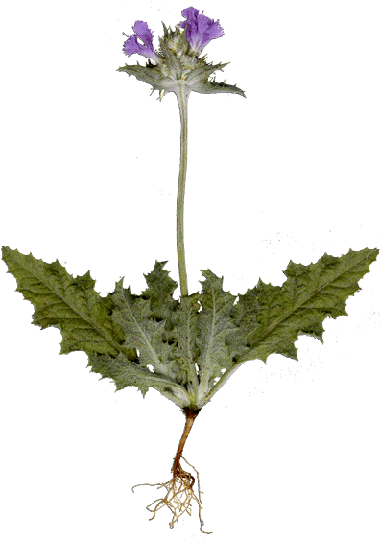

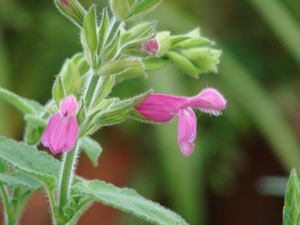
 Salvia x 'Maraschino'
Salvia x 'Maraschino'  Salvia microphylla 'Wild Watermelon'
Salvia microphylla 'Wild Watermelon'  Salvia karwinskii x involucrata v. puberula
Salvia karwinskii x involucrata v. puberula  Salvia involucrata 'Hadspen'
Salvia involucrata 'Hadspen'  Salvia guaranitica 'Van Remsen'
Salvia guaranitica 'Van Remsen'  Salvia greggii x lemmonii 'Raspberry Royale'
Salvia greggii x lemmonii 'Raspberry Royale'  Salvia greggii 'Plum Wine'
Salvia greggii 'Plum Wine'  Salvia greggii 'Dark Dancer'
Salvia greggii 'Dark Dancer'  Salvia greggii 'Cherry Chief'
Salvia greggii 'Cherry Chief'
Comments
There are no comments yet.